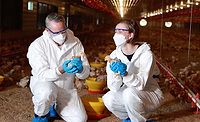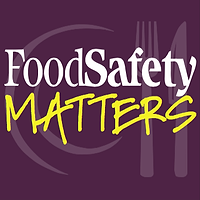Last week, the International Association for Food Protection (IAFP) convened its Annual Meeting at the Salt Palace Convention Center in Salt Lake City, UT. The IAFP Annual Meeting was attended by more than 3,800 top industry, academic, and governmental food safety professionals from six continents. Each year, this premiere event for industry professionals convenes and discusses current and emerging food safety issues, the latest science, and innovative solutions to new and recurring problems; the meeting also presents opportunities to network with thousands of food safety professionals from around the globe.
Recurring themes at this year’s IAFP Annual Meeting:
Transparency and Recent Outbreak Communications
In 2018, foodborne outbreaks have been rampant. Romaine lettuce from the Yuma, AZ, growing region was contaminated with Escherichia coli O157:H7. Vegetable trays by Del Monte had Cyclospora. Kellogg’s Honey Smacks cereal had Salmonella contamination, and so did pre-cut melons and cantaloupe.
An overall theme, though, seemed to be what conference attendees perceive as a lack of transparency among federal agencies when it comes to disclosing details in relation to some of these recalls. This was especially the case in a session entitled “Is There Such a Thing as Too Much Transparency? Different Perspectives on Deciding When to Communicate during a Food Safety Outbreak.”
“More effective recall communication on behalf of [the U.S. Food and Drug Administration] FDA could have prevented some people from getting sick,” said Thomas Gremillion of the Consumer Federation of America. He made a similar comment in reference to last year’s soynut butter outbreak and recall.
There were also questions regarding why FDA wouldn’t want to fully disclose the restaurants and retailers involved in the romaine lettuce outbreak. That information was only made public after supply chain records were successfully subpoenaed by food safety law attorney Bill Marler. Questions swirled about whether fully disclosing companies within a supply chain is more helpful than harmful. Does too much transparency cause too much panic among consumers? Could it lead to what some refer to as “recall fatigue,” ultimately causing consumers to tune out?
At least two people in the session personally inquired about what to do about potentially contaminated or recalled food products they had in their possession. One of those people was Elizabeth Greene of the U.S. Centers for Disease Control and Prevention. She personally called a romaine lettuce manufacturer to inquire about whether the product she had at home was from the Yuma, AZ, growing region. Elizabeth said that after 45 minutes, a representative from the manufacturer called her back and could not confirm whether her lettuce was affected by the recall. They could not trace it. Similarly, an audience member said he called Del Monte to ask about a food item in his possession. In short, he was told that because Del Monte hadn’t issued any recall, they could not help him any further.
In the “U.S. Regulatory Update on Food Safety” session, Stephen Ostroff, M.D., FDA’s Deputy Commissioner for Foods and Veterinary Medicine, himself said that, “We need traceability. We have the tools today to accomplish this.” The industry continues to look forward to how current technologies and traceability methods can lead to greater transparency and safer food.
Whole-Genome Sequencing
The process of whole-genome sequencing (WGS) was predictably a hot topic this year, particularly given the outbreak investigations previously described. WGS continues to be the primary tool for agencies and public health officials charged with investigating foodborne illness outbreaks. Throughout the meeting, there were also mentions of growing interest in WGS within food companies when it comes to pinpointing microbiological hazards and overall improvement of food safety. Despite all of this, there is still a long journey ahead in terms of keeping up with the technological advancements that compose WGS, and making it a more routine, cost-effective, and widely used tool.
Organizational Communication & Networking
There was also an overarching theme that encompassed communication and networking?both inside and outside of an organization.
In the Ivan Parkin Lecture, Texas A&M University’s Gary Acuff, Ph.D., gave a talk entitled "Where Do You Put Your Chopsticks?" However, the presentation was more centered around the idea of networking, mentoring, and bringing the younger generation of food safety students and professionals into the fold.
In “Help! I’m New Management. How Do I Convince My Colleagues Food Safety is Important?”, a session about communicating the importance of food safety to upper management, a panel of speakers stressed how crucial it is to be able to work with other people and departments that may not know anything about food safety. There was also commentary on communicating with staff members from different generations, cultures, and ethnic backgrounds.
Ann Marie McNamara, Ph.D., of Target, presented the John H. Silliker Lecture during the meeting’s closing session. She recalled the many food safety heroes she has met over the course of her career, with particular emphasis on the Jack in the Box E. coli outbreak from undercooked ground beef patties in 1993. It was a particularly moving tribute to those involved in that tragedy, as we remembered Dave Theno, Ph.D., and the son of the 2018 Food Safety Magazine’s Distinguished Service Award, Darin Detwiler, Ph.D. Later that evening, at the Awards Banquet, Dr. Detwiler was presented with this award, and others from IAFP were recognized for their important contributions to food safety.
IAFP 2019 will be held July 21-24, 2019 at the Kentucky International Convention Center in Louisville, KY.
Sign up for Food Safety Magazine’s bi-weekly emails!
Subscribe to our podcast: Food Safety Matters!





